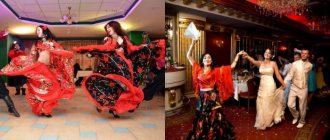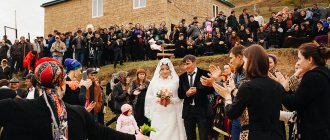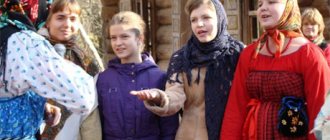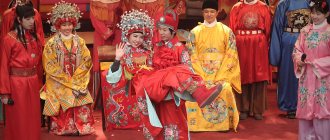Dagestan is a republic of Russia, which is located in the southernmost region of the country. In addition, it is multinational and unites 102 nationalities. Among them are both indigenous and visiting populations. Indigenous nationalities include Avars, Aguls, Andians, Kubachi, Dargins, Laks, Rutuls, Lezgins, Tabasarans, Tsez and others.
The culture and traditions of the peoples of Dagestan are very diverse; they were formed over many years and passed on from generation to generation. Each of these peoples has its own characteristics and differences that give them their identity.
Avars
Maarulal or Avars are the people of Dagestan, numbering about 577 thousand people. They are distributed throughout western Dagestan, especially in the mountainous regions. Most of them are rural residents. They communicate in their Avar language, which has many dialects. The Avars profess Islam, but elements of paganism are still present in their faith. They have a sacred attitude towards nature, honor it and call for help by performing magical rituals.
The traditional occupations for these people are cattle breeding and farming. The preferred animals are cattle, and in the mountains - sheep. The Avars developed a highly organized structure of terrace farming, which in the mountains was supplemented by an irrigation system. Like the rest of the peoples of Dagestan, the Avars have been actively using home crafts for a long time. These include weaving, embroidery, wool knitting, wood and stone carving, and blacksmithing.
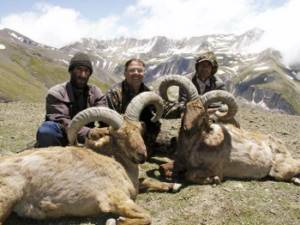
The beauty of the nature of Dagestan
Dagestan is the extreme southern region of the Russian Federation. The region stretches from north to south for almost 400 kilometers. In the east it is washed by the waters of the Caspian Sea. The central and southern parts of the republic are occupied by the mountains and foothills of the Greater Caucasus, and the vast Caspian lowland stretches in the north. There are many rivers in Dagestan, and almost all of them are concentrated in the mountainous part of the country. The largest of them are Terek, Sulak, Samur, Rubas.
The magnificent beauty of Dagestan amazes everyone with its magnificent mountain landscapes and amazing natural sites. Mountains occupy about 50% of the total area of the republic. The highest of them are covered with snow caps even in the summer heat. In the mountains of Dagestan there are incredibly many caves, waterfalls, canyons and picturesque valleys with lush green vegetation.
Every year, the region is visited by several hundred thousand tourists to see with their own eyes all its beauties and capture them in photographs.
Agultsy
The Agul people of Dagestan live in its southern part. The size of this population is approximately 8-9 thousand people. To communicate, they use the Agul language, which is related to Lezgin. This nation lives in 21 settlements in southeastern Dagestan.
The traditions of this people, like the traditions of the peoples of Dagestan in general, are unique. For centuries, the main occupation for the Agul people was cattle breeding. Only men had the right to care for sheep. Women worked exclusively with cattle.
Metal processing was a very important aspect of the life of the Agul people. Blacksmiths made axes, scythes, knives and sickles, which were useful in any household. The Agul people were excellent builders. They built bridges, houses and mosques. They decorated their buildings with skillfully carved stones, the ornaments of which reflected the entire culture of the peoples of Dagestan.
Consultation “Customs and traditions of the peoples of Dagestan”
“You know that Dagestan is a wonderful country,
blessed for its inhabitants,
formidable to others
and abounding in riches,
thanks to the justice of the people"
For many centuries, the custom of our ancestors - adats - had the force of law and represented enormous moral potential, uniting and consolidating all the peoples living in Dagestan. It’s rare to come across so many adats of the most diverse nature anywhere. After all, no matter the village, we have our own customs. However, despite their originality and differences, they embody the originality and national character of all Dagestan peoples, reflect their common interests, and come from the same root. Their special value lies in the fact that they contain a generalized, time-tested, centuries-old experience.
Although each Dagestan people has its own customs and traditions, together they form a common heritage. Reviving it is an urgent task of the time. Why this needs to be done hardly needs to be proven. Customs that have been preserved in the sphere of everyday life, morality, and civil rituals preach honesty and justice, simplicity and modesty, hard work and straightforwardness, frankness and filial duty, assistance, and friendship to people. Adat regulates human behavior, serves as a means of introducing him to high culture, mastering production skills, promoting and celebrating religious and civil holidays.
1. Greetings and addresses of the highlanders
"Assalamu alaikum, dear friends"
The Dagestan peoples have strictly developed rules of behavior in public places, addressing and greeting each other - right down to gestures, taking into account age, gender, position, etc. Everything is aimed at not hurting a person’s dignity, not intrusively keeping someone close to oneself, not violating the right to freedom of action, the rights of everyone, including a foreign-language stranger. In this regard, the greetings and addresses accepted among the peoples of Dagestan deserve attention.
The tradition of greeting each other when meeting is an ancient custom. It is known to the people of all countries and, at first glance, is the same everywhere. Everywhere in this custom the most cherished dream of peace and friendship is reflected. It’s not for nothing that we say “Assalamu alaikum” which means: “Peace be with you!”
2. Hospitality
Of the ancient traditions of the highlanders, what is most striking is the custom of hospitality that first appeared in Dagestan. Dagestan proverbs say: “May the day never come when a guest does not come to the house!”
According to long-established customs, every highlander considered it an honor to receive a guest with dignity. Guests were received at any time of the night or day. The Dagestanis even had a custom - when they sat down to dinner, they divided everything between family members and separated the portion in case a belated guest suddenly arrived.
3. Respect for elders
“A people that does not respect old age has no future”
All nations have an unshakable rule in their customs and traditions: respect your elders. In Dagestan, after the custom of hospitality, it is considered second and more significant. Every inhabitant of the country of mountains considered it his duty to honor his elders. This is not a blind, but a deep recognition of the authority of a man who has lived a lot and experienced a lot. And at the same time, it presupposed respect for the national dignity of the people.
Justice, equality of rights and consideration of the interests of people, regardless of their position, trust, sensitivity, politeness, delicacy, modesty - all this was connected by a seemingly simple tradition - respect for old age.
For the mountaineers, the older generation has always been the living memory of the people. People said: “When an old man dies, the house is empty; when a young man dies, the heart is empty.” Therefore, they were considered people of great self-control and wisdom, and in difficult, critical times they turned to them for advice.
The social role of the older generation in Dagestan has always been great. According to custom, not a single significant event in the villages took place without the participation of the most honorable and respected elders. They were considered the guardians of folk traditions, customs, rights, and rituals. Their authority and words were indisputable.
The Dagestan jamaat is a complex socio-political organism with communal traditions, and it survived thanks to the efforts of the older generation. So, according to Dagestan adat, respect is one of the most important requirements in relationships. Obedience to parents and respect for elders is the law of the mountains.
4. Humanistic principles of namus
Old and new in namus.
The concept of namus hides a whole moral code of mountain residents.
Namus is, in essence, a kind of generalization of customs, traditions, their quintessence. It once permeated all pores of mountain life - honor, conscience, and nobility.
Namus teaches, first of all, the preservation of moral and humanistic principles in relations between all Dagestan peoples and individually each highlander.
5. Islamic traditions in Dagestan.
Dagestanis have always remained big fans of the Muslim religion. Their whole life was colored by Islamic traditions. During the years of Soviet power, an incredible amount was done to organize the eradication of the system of cults and rituals of Islam, the destruction of mosques and the removal of the clergy from public activities. This caused enormous moral harm to Dagestan.
Now the time has come when everyone can follow the injunctions of Islam without hesitation.
Islam is the carrier of Muslim culture in Dagestan.
6. Jamaat – collective mind.
Jamaat, consisting of tukhums, in the concept of the mountaineers is a self-governing community. With this way of life, the socio-economic and political development of the majority of the Dagestan population took place for many centuries, even where there were no feudal orders. This is one of the original features of Dagestan.
The Jamaat acted as a single legal entity with rights to its land, up to the seizure or transfer of any part of it for conditional use.
The strength of the jamaat rested on the unity of its people. Hence, his main concern became maintaining peace and order in his territory.
The jamaat had its own authorities. All internal affairs were decided independently.
7. Forms of Dagestan kinship.
Tukhum is the family tree of the highlanders.
In the mountains it is difficult to find an aul where people are not grouped by tukhums. According to tradition, each highlander belonged to a specific tukhum. As they say: “A tree is held together by its roots, but a person is held together by its roots.” This was the case even when the highlander did not live in his native village, but was in a foreign land. He firmly retained in his consciousness his commonality with the tukhum. The ties of tukhum kinship are a powerful factor in mutual support and assistance to each other. According to the Dagestan concept, the more people in a tukhum, the higher its influence in society.
Atalychestvo
- an ancient Dagestan custom that also existed among other Caucasian peoples. Translation from Turkic - fatherhood. In Dagestan, this custom took on different forms. In one case, children were given to be raised in the family of a relative from their own tukhum in their own village; in the other, on the contrary, they were transferred to a relative in the family of a foreign tukhum, and thus the kinship between the two tukhums was established.
Atalyk is a teacher and had to take care of his pet as if he were his own son. First of all, take care that the child grows up healthy and hardworking, knows how to ride a horse, wield a weapon, knows the Koran, and is brought up in the spirit of mountain ethics and decency.
The return of a son to the family was arranged with special solemnity, where the ties of kinship between the family and the atalyk became house-owning.
Twinning.
The custom of twinning is one of the highest forms of friendship between people. He was well known to all Dagestan peoples and was not associated either with Tukhum kinship or with nationality. As a rule, this custom arises among people who have experienced some critical life situation.
This could happen in war, during natural disasters, or acute need. In such an environment, mutual feats and other actions were performed that helped to overcome difficulties and emerge with honor from the most dangerous situations. After such trials, they became friends and the friendship that arose in this way later developed into twinning.
Brothers are people of great courage, will and high morality. Friendly relations ended with the ceremony of twinning. In one case this could be in the form of a verbal oath to be a true friend until courage fails. In another case, the rite of twinning was performed by mixing the blood of friends. It was done like this: friends mixed drops of blood from cut fingers with a drink poured into a bowl. The drink was then drunk by both friends, it was believed that the mixing of blood gave them the strength of a brotherly relationship.
Dairy brotherhood.
The dairy brotherhood occupies a prominent place in the social life of Dagestanis. Children who were not related to each other and were fed by the same mother's milk became milk brothers. It was generally accepted that mother's milk, passing through the blood of the consumer, made him, as it were, his own son. This is where the name itself comes from - foster brother.
The formation of a dairy brotherhood was accompanied, in the first case, by temporary breastfeeding of a child by a relative or neighbor during the absence of the mother. This custom was and remains quite widespread in our mountainous region.
There was also constant feeding of an infant by invited women for a fee. There could be several nurses. As a rule, wealthy families resorted to this type of feeding.
Kunachestvo
Kunachestvo is one of the ancient institutions of the peoples of the Caucasus, and occupies an important place in their life. The path to becoming a kunach was through the traditions of hospitality. Often an acquaintance that began with hospitality turned into friendship, that is, the guest and the host became kunaks.
The word "kunak" means "friend", a kind of brother. If the Kunaks truly became close, they were ready to sacrifice all their property and lives in order to strengthen their ties. The relationship between the kunaks was so close that in the event of the death of their parents, the kunak took the children of the deceased into his family.
Dagestan knows several features of the kunas. The kunak, which was inherited by the family from the father’s grandfather, is considered traditional. Here, close and friendly relations were preserved sacredly forever and descendantly. Another type is when, due to some circumstances or on the recommendations of someone, he came to the house as a guest and enjoyed the hospitality of the owner. And the third type is kunak waiting list, i.e. a guest brought to a highlander's house by a representative of the village administration. Providing shelter to a “road person”. In the villages, the most respected family was considered to be the one with the most kunaks.
8. Ancient beliefs, superstitions and signs
Pagan rite of the Kubachi people
One of the ancient rituals of the Kubachi people is reminiscent of ancient funeral customs in Tibet. When a person dies among them, if he is a man, they hand him over to the men who are underground, who dismember the bones of the deceased, clean them of meat and collect the meat, which is given to the black crows to eat. And if it is a woman, they hand her over to the men above the ground, who draw her bones, and give her meat to the kites. And they stand with arrows to prevent other birds from approaching her meat.
Pagan rite of the South Dagestanis
They did not bury the dead; they were put out in the open until the spirits came and took them.
- Eclipse rituals.
- Fire worship and the spring equinox.
- Rituals for making rain.
9. Labor traditions of the highlanders.
The most important thing in people's lives is work. In fact, the history of mankind is the history of labor and labor relations. Labor created everything material that man used and uses.
Hard workers are the most important trait of a mountaineer. The highlander worked not only to satisfy his own needs and requirements, but also for his offspring.
Love of work is a wonderful folk tradition; it is the most precious thing from our distant past.
Labor rituals and holidays.
Feast of the first furrow.
This is an indigenous holiday, purely Dagestan, when the ancestors switched to plow farming. Once upon a time, all Dagestanis celebrated the holiday, then it was supplanted by Navruz. The women prepared the food and chose the chief plowman. The chief plowman had to be rich, tall, lucky, with a thick beard. They chose a place for ritual plowing, men and children went there.
The plowman wore his fur coat and hat inside out. The children doused him with water and covered him with earth. Scarves and ribbons were tied to the horns of the bulls, bagels and sweets were hung.
They baked huge bread in advance. At the height of the holiday, bread was rolled downhill. In the evening, sports competitions, running, and horse racing were held. Beautiful. slender mountain women in white scarves and national costumes presented the winner with scarves and fabrics.
Navruz holiday.
The holiday “Navruz” is March 21-22 – the days of the spring equinox.
Navruz is celebrated in the Central Asian republics, in Azerbaijan, and most magnificently in Southern Dagestan.
Lighting bonfires is the main element of the holiday; women with torches climbed onto the roofs.
Jumping over the fire - they seemed to be saying “the disease is caused by fire, the powers of fire are transferred to me.” Mostly adult children jumped.
Flower Festival.
May 9 was most solemnly celebrated among the Lezgins.
They climb the mountain, choose the queen of flowers, and weave flower wreaths. National music is playing, people are dancing and having fun. On this day, guys seem to propose - they give flowers to their beloved girl.
In the evening they set the tables, prepare various sweets and some other national dishes. A competition is held to see who has the best wreath, and the winner is presented with flowers.
Eid al Adha
This is everyone's favorite holiday. It takes a very long time to prepare for it. This holiday is celebrated after a month of fasting. Early in the morning they go to the cemetery, where sweets are distributed.
The children are bought new clothes. On Uraza Bayram, everyone buys sweets, paints eggs, bakes, and cooks. On this day, everyone visits each other and treats everyone. Children try to collect as many sweets as possible.
On this day, sins are forgiven; those who were in a quarrel must definitely make peace. Marriages celebrated on this day are considered the happiest.
In our area they celebrate their local holidays,
for example "District Day".
District Day
This holiday has already become traditional in our area. It is held in the fall, in the center of the region, in the village. Dylym. On this day people come here from all villages: agricultural workers, intellectuals, cultural workers and others.
On this holiday, they bring their harvest to the exhibition and sale. The district day is held as a fair. Everyone presents their best product, sells, exchanges, evaluates.
In the evening, workers of cultural centers show their performances, have fun, and dance. Various competitions are held, the winners are given various souvenirs prepared by the participants of this celebration themselves.
On this day, household plots, courtyards, and streets of our village are also assessed. The winners are given gifts.
We have local rituals and customs.
Rituals for making rain.
During times of drought, older women gather to make rain.
Mug bai – gyeb kkola rak1arun ch1akh1iyal ruchchabigun, lolola k1udiyal h1agal ts1ayalda t1ad. Gyenibe bala mug, rol, bag1argyolo. Bel'un hadub gyeb bikyula shibab rokobe, gyeb Kwanala va gyarula ts1ad kyyan Allagyasde.
Hasalihe ruk1una g1emer guayal. Guayal kkola rak1arun g1emeral g1adamalgun, tsoyaze kumek gyabi. Gyel guayal gyarula rats1arize, kot1arize, ts1orosarol, bag1argyolo ch1uch1ine va gyedingo ruk baleb bak1alda.
10.Family traditions.
Rituals and beliefs at the birth of a child.
The birth of a child is the most joyful and solemn event for every Dagestan family. In the villages, all the villagers warmly respond to this. Thus, the first person to notify the father of the birth of a child is given a gift.
After birth, the ceremony of naming and the ceremony of placing the newborn in the cradle is performed.
Naming ceremony.
According to the custom in the mountains, when giving a newborn a name, it was supposed to slaughter two rams if the child was male, and one ram if the child was female. Relatives, neighbors are invited, as well as the person who should name the child, be it a qadi or someone else.
The name giver pronounces “adhan” into the right ear (meaning the child’s introduction to Islam), and “name” into the left ear. After this, a “dua” is pronounced with wishes of happiness and good luck. Dates, sugar or other sweets were rubbed along the child's gums to make life sweet.
11. Mountain wedding customs
Mountain weddings are colorful, cheerful, unique - one is better than the other. Each has its own customs, rituals and characteristics. A mountain wedding is not only a place for a national celebration of the newlyweds, but also a kind of witticisms, jokes, and dancing competitions. Some weddings included theatrical performances.
A traditional ritual cycle has developed: pre-wedding, wedding, post-wedding. Pre-wedding is the most responsible. The issue of a son's marriage or a daughter's marriage was decided at a high level. First, the father and mother, then at the council of the tukhum, the closest relatives conspired among themselves.
Andean group of peoples
The Andians are a whole group of nationalities, which includes such peoples of Dagestan as the Akhvakhs, Botlikhs, Tindals, Bagulals, Karatins, Godoberins, Chmalals and, in fact, the Andians themselves. The total number of people of these nationalities is 55-60 thousand people. They live in the highlands of Western Dagestan. Communication takes place in the Andean language with many dialects.
The religion of the Andians reflects the customs of the peoples of Dagestan, since the majority of the indigenous population are Sunni Muslims. Their main occupations were also agriculture and cattle breeding. Since ancient times, the houses of these peoples were built of stone. There were not many two-story dwellings; one-story ones were rectangular in shape. Those Andians who were engaged in agriculture developed their own agricultural calendar, which helped determine the time of sowing and harvesting certain plants.
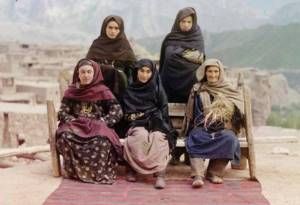
Meet Dagestan
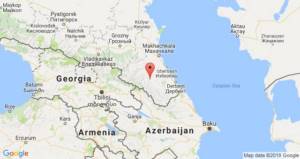
The Republic of Dagestan is one of the constituent entities of the Russian Federation, located in the southwestern part of the country. It borders on Kalmykia, Chechnya, the Stavropol Territory, as well as Georgia and Azerbaijan. If you look at the physical map of the republic, you can see that it is clearly divided into two parts: the northern lowland and the southern mountainous. And it is the beauty of mountainous Dagestan that attracts a huge number of tourists to this region.
Officially, the region of dry wines and cognacs was formed in January 1921. Today, about 3 million people live here. The ethnic composition of the population is extremely varied: Avars, Lezgins, Kumyks, Dargins, Russians, Nogais, Laks and others. 14 languages in the region have state status!
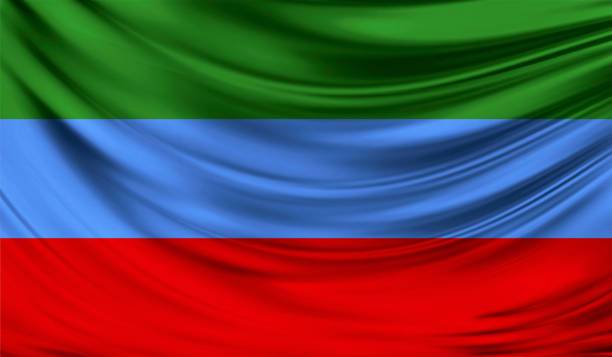
The flag of Dagestan is interesting. It consists of three horizontal stripes: green, blue and red. The first personifies Islam (the overwhelming majority of Dagestanis are Sunni Muslims), the second symbolizes the Caspian Sea, and the third symbolizes the incredible bravery and courage of the inhabitants of the “mountainous country.”
Dargins
Dargins are the people of Dagestan, traditionally inhabiting mountainous regions. There is no language that unites all Dargins; there are many variations of the Dargin language. The customs and traditions of the peoples of Dagestan, as well as the Dargins individually, are closely connected with the general social and economic processes that took place in the ancient period of history. They were engaged in the usual activities for the inhabitants of this territory, that is, cattle breeding, agriculture and folk crafts. The Dargins were famous for their jewelry, leather and wool products, and weapons. Women processed wool, wove cloth and rugs.
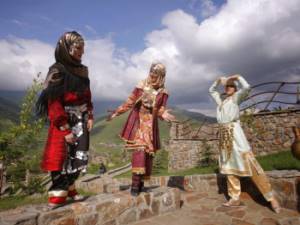
Kubachi residents
These people of Dagestan live in the small village of Kubachi, Dakhadaevsky district. Their number does not exceed 1900 people. In addition, Kubachi residents also live in other settlements in Central Asia and the Caucasus. Their native language is Kubachi. The inhabitants of this settlement are mainly artisans. If they grew food or grazed livestock, it was of an auxiliary nature.
The most common crafts have long been metalworking, construction, wood and stone carving. Women were engaged in knitting, weaving, embroidery, and made felt from which they made shoes. Knowledge and skill in metal processing was passed on from father to son. Interesting are the folk dances of the Kubachi people, which were carefully developed for the performance of various rituals.
General family traditions
The national character of any republic largely depends on how the people living there raise their children. Having absorbed centuries-old traditions from an early age, each new generation continues the legacy of its elders, introducing its own ideas, achievements, and discoveries into the general culture. Therefore, the life of modern people is determined not only by the kind of education they themselves received, but also by what their distant ancestors taught their children.
All the peoples of Dagestan strive to develop three main qualities in the younger generation: respect for elders, hospitality and hard work.
From a very early age, a child is instilled with a respectful attitude towards representatives of the older generation: parents, teachers, neighbors. Regardless of who the person is - the director of a plant or a trader at the local market - children and adolescents are obliged to address him as “you”, give up his seat, let him go ahead, etc. During festive feasts, guests are always seated according to age; the oldest person is also the most respected member of society.
A respectful attitude towards father and mother and other relatives makes any disobedience to the will of an elder absolutely impossible. Young Dagestanis cannot argue with brothers and sisters, cannot refuse to carry out instructions from their grandfather or grandmother, and cannot disobey their aunts and uncles. According to tradition, children should only talk to their father while standing; there has always been a special attitude towards the head of the family in the Caucasus.
Mountain hospitality is another cornerstone of Dagestan education. The children learned hospitality, cordiality and kindness by watching how their parents received guests, even if they were complete strangers.
Involvement in work from a young age is a prerequisite for young Dagestanis to grow up. Boys from the age of 11-12 work at home along with adults: herding livestock, digging beds, repairing and making various things. Girls do household chores: cleaning, laundry, cooking, and look after their younger brothers and sisters.
From an early age, representatives of various peoples of Dagestan introduce their children to folk arts and crafts. If in Makhachkala and other cities these traditions are gradually being lost, in the villages they are still very strong. For example, in the 21st century, almost every Tabasaran schoolgirl knows how to weave carpets. This small Dagestani people is rightfully proud of the talents of local craftswomen.
National dances also teach young people to behave in society with dignity.
Laktsy
The central part of Nagorno-Dagestan is inhabited by another people - the Laks. Language – Lak, religion – Islam. This people have lived on the territory of Dagestan since ancient times. Their main occupation is growing wheat crops (rye, wheat, millet, legumes, barley, etc.). Livestock farming was also developed. Among the crafts, cloth making, jewelry making, pottery, stone processing, silver and gold embroidery were developed. The Laks were famous traders, confectioners and acrobats. This people is rich and epic. Stories about the great heroes of the past and how they fought evil were passed down from mouth to mouth.
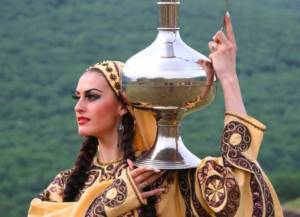
Lezgins
The Lezgins settled compactly on the lands of Southern Dagestan. Their number in this area is 320 thousand people. Communication takes place in the Lezgin language, which is often modified by local residents. Lezgin mythology is rich in stories about gods who controlled nature. But paganism was replaced by Christianity, which after some time was replaced by Islam.
Like all the peoples of Dagestan, the Lezgins grew crops, especially wheat, rice and corn, and raised livestock. The Lezgins made wonderful carpets that are known far beyond their region. Weaving, spinning, felt and jewelry production were also common crafts. The Lezgins are also known for their folk dance - the Lezginka, which has become traditional for all the peoples of the Caucasus.
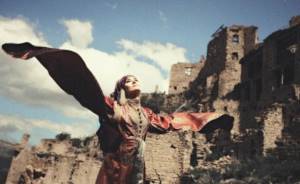
Boys and girls
Perhaps the main feature of raising children in Dagestan is the strict gender separation. Boys and girls should dress, behave, and play differently almost from the cradle. They are not treated equally in the family; sometimes they develop directly opposite qualities.
In general, girls are usually pampered more; they receive the lion's share of parental affection. Young Dagestani women are never punished for mischief. At most, they can severely scold you. At the same time, elders should not forget about the dignity of the girl, which in no case can be infringed. The pride of a mountain girl is not just words, even if she is only 8 years old.
Boys in Dagestan families are traditionally treated more strictly and more is demanded of them. For example, future defenders should never cry or complain about difficulties in school, work or sports.
In conditions of internecine wars and strife, of which there were many in the Caucasus at any time, a man must be able to stand up for his father’s house and relatives. Therefore, they tried to raise the boy to be physically strong and resilient. Fighting skills, intelligence, courage and willpower - these are the qualities that were brought up in young Dagestanis. All of them learned horse riding and weapon handling from an early age.
Girls, on the contrary, were raised to be modest, patient, and pious. A self-respecting young mountain woman should behave in society with dignity, remaining calm in any situation. As the future keeper of the hearth, the Dagestan girl early learned to sew, knit, and housekeeping.
Tabasarans
These people also live in Southern Dagestan. Their number is 90 thousand people. The Tabasaran language is divided into southern and northern dialects. The main belief is Islam. Occupations are also very traditional for this region - animal husbandry and agriculture. The Tabasarans are skilled in carpet weaving, pottery, blacksmithing, woodworking and making socks with a variety of patterns. Various genres of folklore, such as mythical tales and ritual songs, are quite developed.
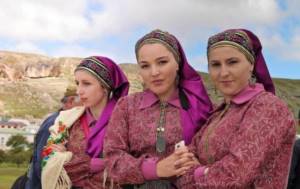
Geography of the region
Dagestan is the southernmost and most mountainous republic of the Russian Federation.
The Caucasus ranges occupy the bulk of its territory, and it is here that Bazarduzo, the highest mountain in Russia, is located. The peoples living in Dagestan are real mountaineers. A small part of the lowland is located only in the northern part of the foothills. The east of Dagestan is washed by the waters of the Caspian Sea. On the territory of the republic there are about 6 thousand large, small and very small rivers and rivulets, of which 100 are classified as large rivers (only 20 of them reach the Caspian Sea). The most famous: Terek, Samur, Sulak. The climate in general is warm-temperate; fluctuations in temperature and precipitation depend on the altitude, distance from the sea, and surrounding mountain ranges. Land areas are divided into flat, foothill and mountainous. Their geography determines the main occupation of local residents.
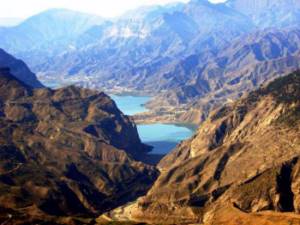
Tsez group of peoples
The Tsez peoples include the Ginukhs, Bezhta, Tsez, Gunzib and Khvarshins. There is no common language; peoples communicate in their own dialects. For these peoples, the blood ties of families, the so-called tukhums, have long been of great importance. These associations helped each member and selected the most advantageous match for marriage. The products used were milk, dried and fresh meat, cereals, flour, fresh and dried fruits. Although these people profess Islam, beliefs in jinn, brownies, devils and witches have been preserved.
Thus, Dagestan is the cradle of many peoples. The culture and traditions of the peoples of Dagestan have retained their distinctive features in our time, which makes them interesting to study. Their faith combined the main features of Islam with remnants of the pagan past, which makes them unique.
Is it safe in Dagestan?
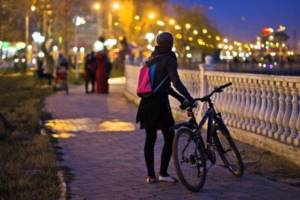
Zarema Alieva
Yes, it's safe. Life in the republic is in full swing: mothers with strollers are walking, old people are playing dominoes in the park. There is no shooting on the streets, unless there is a wedding nearby, but even then you are in no danger.
There is no more danger in Dagestan and Dagestanis than in other places and other people - Russians, Ukrainians, Kazakhs. This is confirmed by numerous tourists who have flocked to the Land of Mountains in recent years.
Until now, Russians have stereotypes about the dangerous Dagestan, counter-terrorist operations that were carried out almost every day are fresh in their memories, and the central media savored these topics with pleasure. But the situation has long since improved.






